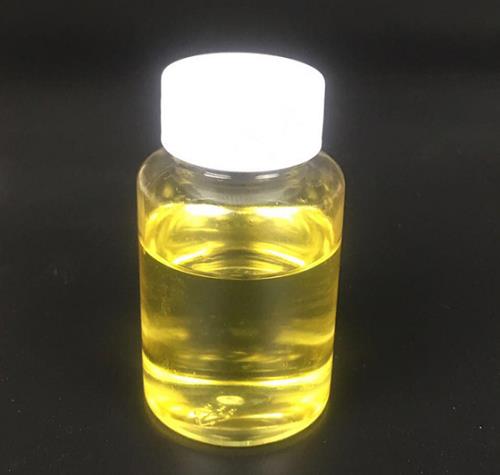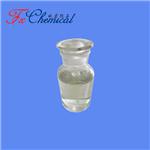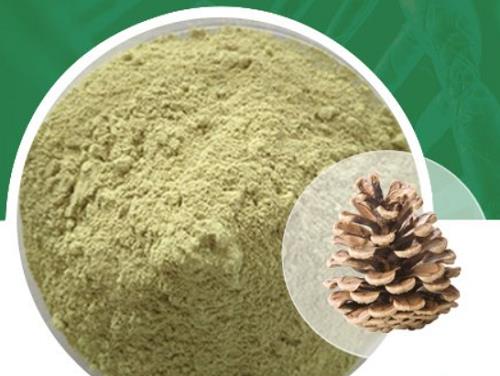Allyl hexanoate: A Safe Flavoring Compound or Not?
Allyl hexanoate is a volatile flavoring compound with a pineapple flavor. It is naturally found in baked potatoes and mushrooms. Allyl hexanoate is used as a flavoring agent in chewing gum, candies and baked goods. We are committed to bringing you Greener Alternative Products, which adhere to one of the four categories of Greener Alternatives.

Procedure for the Synthesis of Allyl hexanoate
General procedure: To a stirring mixture of acyclic/cyclic ether (1, 1.1 mmol) and acid chloride (2, 1.0 mmol) indichloroethane (10 mL) was added iron powder (0.31 g, 0.2 mmol) and stirred at 45-84 oCdepending on the reactants used. The reaction was monitored by TLC (5% EtOAc:hexane) andwas complete in 3-8 h, after which the contents were filtered to separate iron. Volatiles in thefiltrate were removed under reduced pressure in rotary evaporator and the crude was directly subjected to silica gel chromatography using 5% EtOAc in hexane to give the corresponding Allyl hexanoate in good to excellent yields.[1]
Safety assessment of allyl hexanoate
The types of toxicity assessed for allyl hexanoate and its analogs include reproductive toxicity, skin sensitization, and genetic toxicity. Specifically, allyl heptanoate was used as a read-across analog for reproductive toxicity and skin sensitization, while genetic toxicity was determined to not be a concern based on existing data. The conclusion that allyl hexanoate does not pose a risk for skin sensitization is supported by several lines of evidence. Structural analysis, animal studies, and human studies on both allyl hexanoate and the related compound allyl heptanoate indicate no concern for skin sensitization. Specifically, guinea pig maximization tests and multiple human maximization tests showed no skin sensitization reactions at various concentrations. Additionally, a Confirmation of No Induction in Humans test with allyl hexanoate also revealed no sensitization reactions among volunteers. Inhalation exposure to allyl hexanoate is quantified using the Creme RIFM Model, which estimates the exposure at 0.049 mg/day. This value is significantly lower than the Cramer Class III Threshold Of Toxicological Concern value of 0.47 mg/day, indicating that the exposure at the current level of use is considered safe. The screening-level hazard assessment for allyl hexanoate evaluated its persistence and bioaccumulation based on specific criteria. For persistence, the EPI Suite model BIOWIN 3 predicts a value less than 2.2, and either BIOWIN 2 or BIOWIN 6 predicts a value less than 0.5. A material is considered potentially bioaccumulative if the EPI Suite model BCFBAF predicts a fish bioconcentration factor greater than or equal to 2000 liters per kilogram.[2]
Allyl hexanoate was evaluated for genotoxicity, repeated dose toxicity, reproductive toxicity, local respiratory toxicity, photoirritation/photoallergenicity, skin sensitization, and environmental safety. Data show that allyl hexanoate is not genotoxic. Data on allyl hexanoate provide a calculated Margin of Exposure (MOE) > 100 for the repeated dose toxicity endpoint. Data on read-across analog allyl heptanoate (CAS # 142-19-8) provide a calculated MOE >100 for the reproductive toxicity endpoint. Data from read-across analog allyl heptanoate (CAS # 142-19-8) show that there are no safety concerns for allyl hexanoate for skin sensitization under the current declared levels of use. The photoirritation/photoallergenicity endpoints were evaluated based on ultraviolet/visible (UV/Vis) spectra; allyl hexanoate is not expected to be photoirritating/photoallergenic. The local respiratory toxicity endpoint was evaluated using the Threshold of Toxicological Concern (TTC) for a Cramer Class II material, and the exposure to allyl hexanoate is below the TTC (0.47 mg/day). The environmental endpoints were evaluated; allyl hexanoate was found not to be Persistent, Bioaccumulative, and Toxic (PBT) as per the International Fragrance Association (IFRA) Environmental Standards, and its risk quotients, based on its current volume of use (VoU) in Europe and North America (i.e., Predicted Environmental Concentration/Predicted No Effect Concentration [PEC/PNEC]), are <1.
Genotoxicity of Allyl hexanoate
Allyl hexanoate was assessed in the BlueScreen assay and found negative for both cytotoxicity (positive: <80% relative cell density) and genotoxicity, with and without metabolic activation (RIFM, 2014). BlueScreen is a human cell-based assay for measuring the genotoxicity and cytotoxicity of chemical compounds and mixtures. Additional assays were considered to fully assess the potential mutagenic or clastogenic effects of the target material. A mammalian cell gene mutation assay (HPRT assay) was conducted according to OECD TG 476/GLP guidelines. Chinese hamster lung cells (V79) were treated with allyl hexanoate in dimethyl sulfoxide (DMSO) at concentrations of up to 1600.0 μg/mL (as determined in a preliminary toxicity assay) for 4 or 24 h. Effects were evaluated both with and without metabolic activation. Statistically significant increases in the frequency of mutant colonies were observed in the first culture of the first study in the presence of metabolic activation and in the second culture of the second experiment in the absence of metabolic activation (
RIFM, 2013d). Both increases were considered not biologically relevant, as the increase in the first culture of the first study decreased with increasing concentrations, and the increase in the second culture of the second study was within the historical control range. Under the conditions of the study, allyl hexanoate was not mutagenic to mammalian cells in vitro.[3]
The clastogenic activity of allyl hexanoate was evaluated in an in vitro micronucleus test conducted in compliance with GLP regulations and in accordance with OECD TG 487. Human peripheral blood lymphocytes were treated with allyl hexanoate in DMSO, and the micronuclei analysis was conducted at concentrations up to 1570 μg/mL in the presence and absence of metabolic activation. Allyl hexanoate did induce binucleated cells with micronuclei when tested at 512.7 μg/mL in the 4-h treatment without S9 (1.10% increase in micronucleated cells) and at 292.9 μg/mL in the 4-h treatment with S9 (0.65% increase in micronucleated cells) (RIFM, 2010a). However, the micronucleated binucleated cell frequencies at these concentrations were within the vehicle historical control ranges (0.20–1.40% without metabolic activation and 0.20–1.65% with metabolic activation). Therefore, the statistically significant increases at these concentrations were considered biologically non-relevant and not indicative of clastogenic effects. Under the conditions of the study, allyl hexanoate was considered to be non-clastogenic in the in vitro micronucleus test.
References
[1]Bodduri, V.D. Vijaykumar; Choi, Kyung-Min; Vaidya, Raghavender Rao; Patil, Kalpesh; Chirumarry, Sridhar; Jang, Kiwan; Yoon, Yong-Jin; Falck, John R.; Shin, Dong-Soo[Tetrahedron Letters, 2015, vol. 56, # 51, p. 7089 - 7093]
[2]Api AM, Bartlett A, Belsito D, Botelho D, Bruze M, Bryant-Freidrich A, Burton GA Jr, Cancellieri MA, Chon H, Dagli ML, Dekant W, Deodhar C, Farrell K, Fryer AD, Jones L, Joshi K, Lapczynski A, Lavelle M, Lee I, Moustakas H, Muldoon J, Penning TM, Ritacco G, Sadekar N, Schember I, Schultz TW, Siddiqi F, Sipes IG, Sullivan G, Thakkar Y, Tokura Y. RIFM fragrance ingredient safety assessment, allyl hexanoate, CAS Registry Number 123-68-2. Food Chem Toxicol. 2024 Oct;192 Suppl 1:114831.
[3]Thakkar, Y., Joshi, K., Hickey, C., Wahler, J. (2022). The BlueScreen HC assay to predict the genotoxic potential of fragrance materials. Mutagenesis, 37(1), 13 - 23.
See also
Lastest Price from Allyl hexanoate manufacturers

US $0.00/KG2025-04-21
- CAS:
- 123-68-2
- Min. Order:
- 25KG
- Purity:
- 98%min
- Supply Ability:
- 30tons/month

US $10.00/KG2025-04-21
- CAS:
- 123-68-2
- Min. Order:
- 1KG
- Purity:
- 99%
- Supply Ability:
- 100 mt


